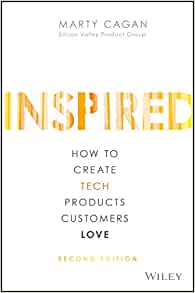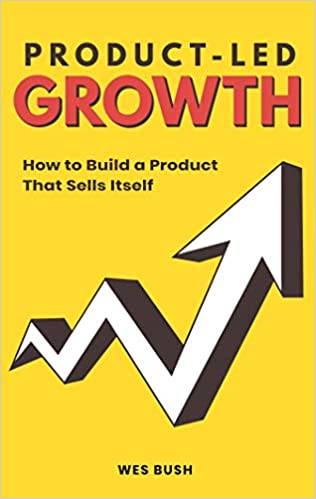Traction: How any startup can achieve explosive customer growth
How any startup can achieve explosive customer growth
by Gabriel Weinberg & Justin Mares
Traction will teach you the nineteen channels you can use to build a customer base, and how to pick the right ones for your business. It draws on inter-views with more than forty successful founders.
I'm a big fan of the DuckDuckGo Search Engine, the search engine doesn't track you, having switched to it as my primary and only search engine I use, a few years ago. I have also been using the Brave Browser as my default browser for a number of years now too. It's not that I have got anything to hide, but also by the same token I don't have anything I particularly want to share with everybody either.
I have tried to limit as much as I can the amount of cookies and tracking on this website, but even that is quite difficult because you never know which libraries actually implement trackers. I have tried my best to minimise, but also at the same time I do need to leverage some in order to gain the exposure I need to distribute my blogs as much as possible.
I have a lot of respect for Gabriel Weinberg for not only as Founder of DuckDuckGo, but also the fact that it was his second successful technology business. Both of which he managed to bootstrap on his own, so he undoubtedly has some insights and strategies that could be useful.
Why I read this book
Regular readers of my blog, will know that I started I am Technical Director at Denizon a company involved in developing Energy Monitoring & Management and Workforce Management software solutions. We are also currently developing a new product at threeine.co.uk which we aiming to get an MVP release out within the next few months. We have been working closely with a couple of customers and have been designing a product that suits there needs. These customers are in different sectors but they all face similar problems, and the products we are developing provide a solution to their problems but we have found an approach to make it suit across sectors.
Readers of my blog will know that I have read and reviewed Inspired : How to Create Tech Products Customers Love and me and my team have been greatly motivated this book and we have all been putting into action as much as we can what we have learned from the book into our Product Development process.
Inspired
How to Create Tech Products Customers Love
How do today's most successful tech companies-Amazon, Google, Facebook, Netflix, Tesla-design, develop, and deploy the products that have earned the love of literally billions of people around the world?
We also not that the crucial component of any product success is Sales and Marketing and to be honest, as technical geek, I feel this is the hardest part to conquer. It's an area of business and product development that if I am perfectly honest I still only have a real basic understanding.
The problem we identified with both Energy Monitoring & Management and Workforce Management software is that unfortunately although our products are really appreciated by isolated customers in a particular niche they just couldn't not be rolled out to the market as a whole. Without a significant amount of redevelopment, which actually really means completely developing the products from scratch.
There are significant risks that come with that approach, that although from a technical level are really quite exciting and gives us a chance revisit some design decisions etc. Commercially for us it unfortunately does not make sense at this stage, primarily because what we actually need is greater input from more customers in general.
All these problems fundamentally come down to Traction and the ability
Traction is powerful. Technical, market and teams risks are easier to address with traction. Fund-raising, hiring, press, partnerships and acquisitions all become much easier
Gabriel Weinberg - Traction
The book helps you define what Traction actually means and helps you to identify what are the right levels of traction your business/product needs
There is a quote in straight in chapter one, that made we realise our core fundamental mistakes with with our Energy Monitoring & Management and Workforce Management software.
Traction is basically quantitative evidence of customer demand. So if you're in enterprise software, [initial traction] may be two or three early customers who are paying a bit; if you're in consumer software the bar might be as high as hundreds of thousands of users
Traction
Here in lies the bulk of our problem. We had the initial traction, but we were just unable to get that to scale further. Ultimately, the bulk of the problem was deeply rooted in our Marketing and as a group of geeks we thought good software would be enough. Which I can now attest is definitely not the case.
Clean code and software that has been architect-ed and developed using Software Design Patterns and even having a really talented team of developers. Does not sell software, your customers for the most part will never care about that, in fact they will assume that is just a given and just what it takes to develop software.
Fundamentally, all customers care about is does your software solve their problem. The internals of the code etc, they really don't care and never will.
What I learned from this Book
The key points I learned from this book is that you primarily have to start developing your market at exactly the same time that you start developing your product. You simply cannot rely on your product to build your market for you.
The reality is you in order to succeed you really need to be doing both at the same time. Product-Led growth is possible but even for that to succeed requires traction. Product-Led Growth is actually an excellent book to read alongside Traction because in my opinion it helps to fill in some of the gaps not actually covered.
Product-led growth
How to Build a Product That Sells Itself
how to cut your acquisition costs and scale further...by making your product the tool that helps you acquire, convert, and retain customers.
An example of how I have learned to mix concepts from both books into our product marketing approach we are now making use of the Bullseye approach discussed in Chapter Three of the book and we are making use of concepts from Product-Led Growth in order to help define and evaluate the results and to determine whether we are ready to change strategies or continue.
Why I recommend this book
If you're developing products or services, or even if you're just starting to develop your Software Developers Blog, which I ultimately encourage all software developers to do , then you most definitely need to learn how to gain traction with your efforts, because ultimately it may all become rather pointless.
I would advise to not so quickly dismiss this book with the assumption that because it was originally authored in 2014 many of the concepts are no longer relevant. I would agree that some elements my initially appear to be somewhat dated now and certain elements of Social Media and Digital Marketing may have changed, however the core concepts detailed within the book are still very valid.
It is also really insightful to read and learn from the successful entrepreneurs how they overcome and implemented many of the same ideas to launch their businesses.
- What is this Directory.Packages.props file all about? - January 25, 2024
- How to add Tailwind CSS to Blazor website - November 20, 2023
- How to deploy a Blazor site to Netlify - November 17, 2023


